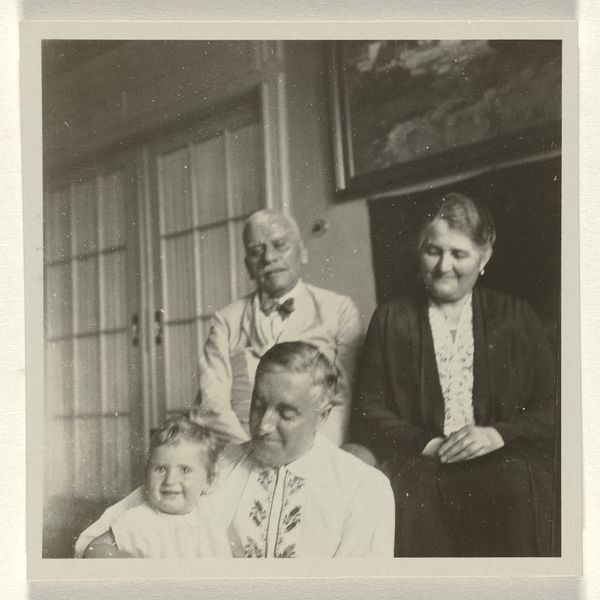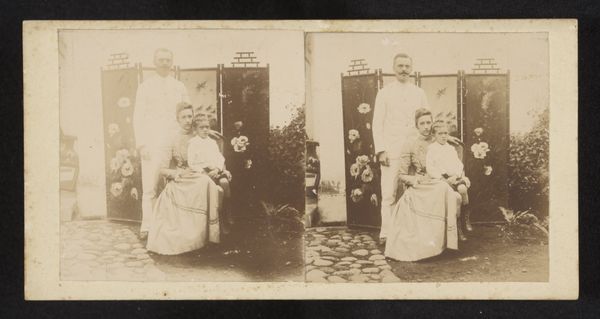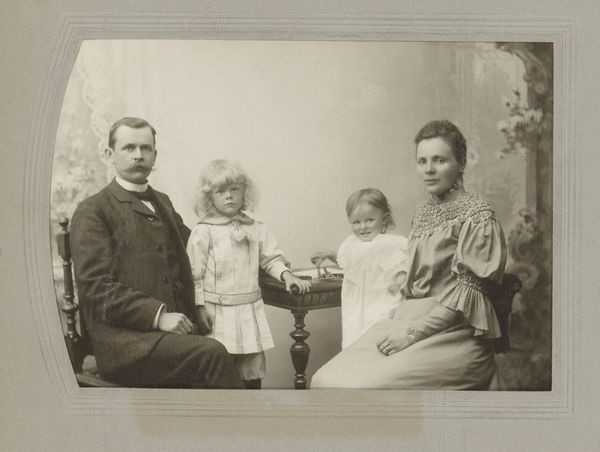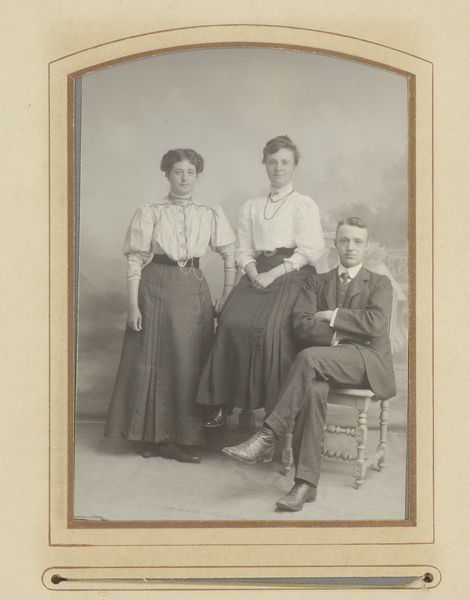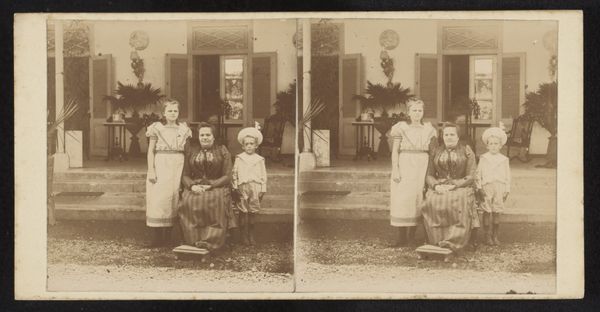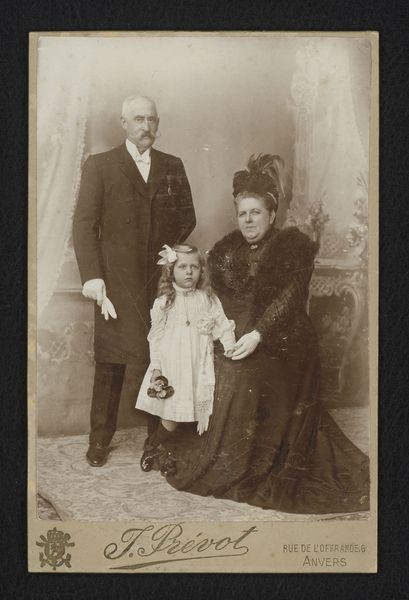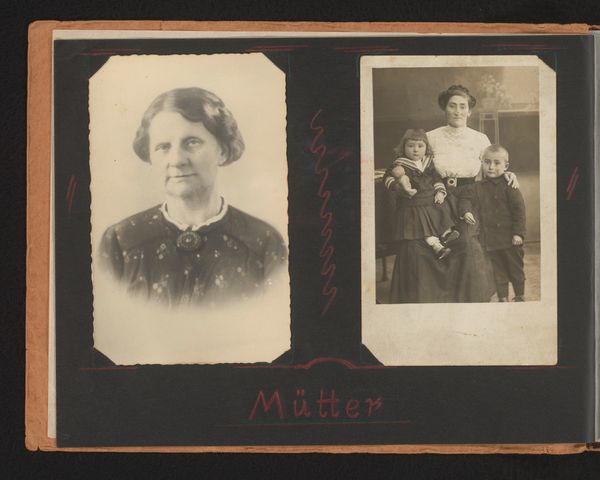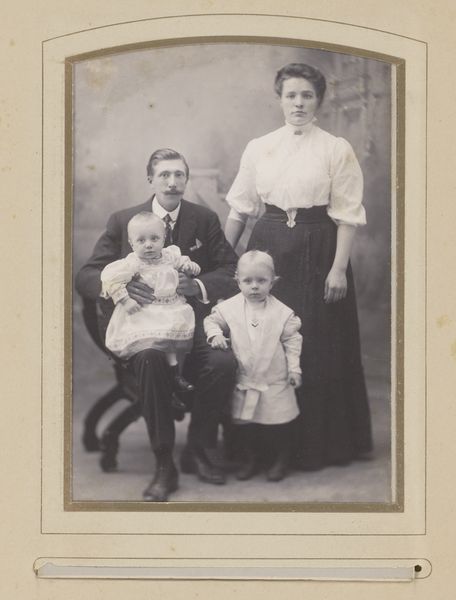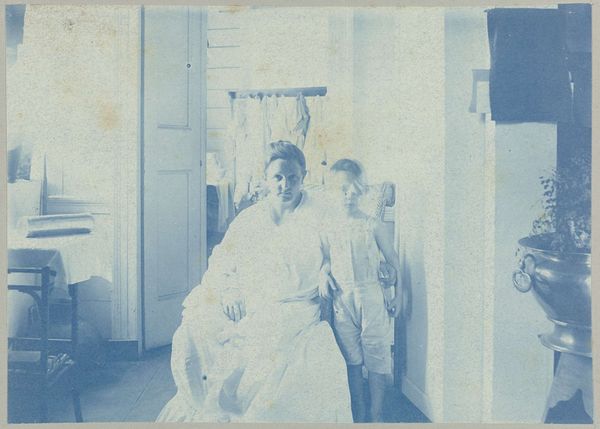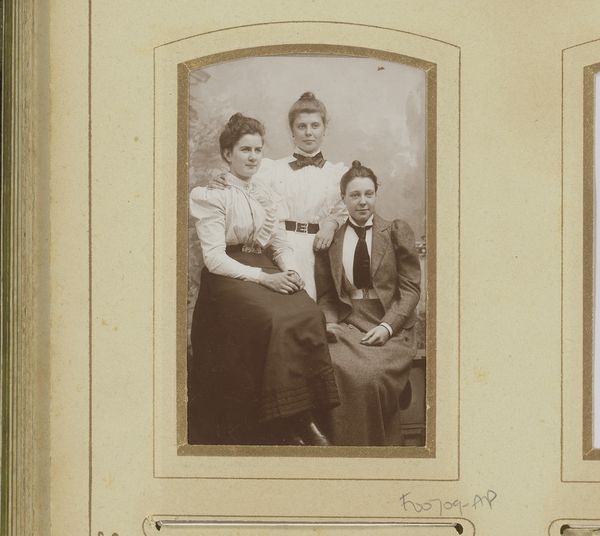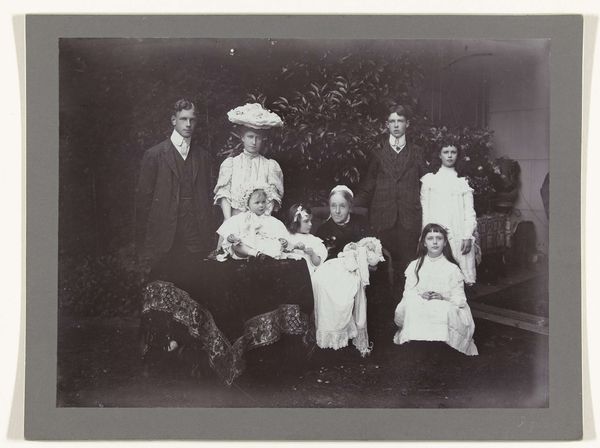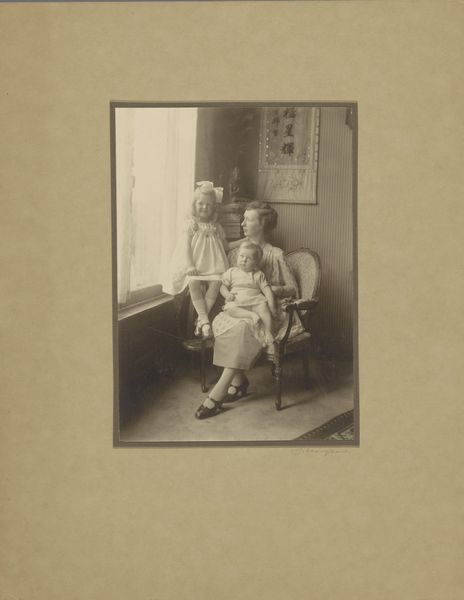
Meir Wachenheimer, Mathilde Wachenheimer-Wertheimer, Eugen Wachenheimer, Isabel Wachenheimer in kamer, 1 september 1929 Possibly 1929
0:00
0:00
photography, gelatin-silver-print
#
portrait
#
print photography
#
archive photography
#
photography
#
historical photography
#
gelatin-silver-print
#
genre-painting
#
modernism
Dimensions: height 60 mm, width 55 mm
Copyright: Rijks Museum: Open Domain
Curator: This gelatin-silver print, titled "Meir Wachenheimer, Mathilde Wachenheimer-Wertheimer, Eugen Wachenheimer, Isabel Wachenheimer in kamer, 1 september 1929," possibly from that same year, offers us a peek into the Wachenheimer family. Editor: Ah, a photographic portrait of a family... and oh my, the light feels trapped somehow. Everyone looks so solemn. It's as if the moment was embalmed the second the shutter clicked. Curator: The choice of gelatin-silver—a popular process at the time—suggests a desire for reproducibility, but also, gelatin silver prints often yield a characteristic tonal range. Notice how that impacts the visual experience here. It speaks to mass consumption of imagery and democratization. Editor: Democratization... Perhaps. But I mostly notice the stoicism etched on their faces. It’s a fascinating paradox; to use the burgeoning accessibility of photography, to document their presence, yet remain so withheld. Are they longing for the future, or haunted by the past? It's got a sort of melancholy to it, right? Curator: I see what you mean about melancholy. It's there. Think of the context. 1929! The rise of fascism, growing social unrest. Photography was entering this new stage of visual communication, of information… a historical archive in the making. The means of production allowed people access to something which only nobility had enjoyed. But for who's consumption and why? Editor: And within that shift, this stiff family photograph is so fascinating. It's this dance between control and vulnerability, you know? All these conflicting emotions locked into a little silver square. So powerful. It also brings to mind how quickly the world shifts, and how that world affects each family. Curator: Precisely. Photography, at that time, became accessible while the traditional concept of 'family portrait' became more about the democratization of memories, now it seems that technology is changing both photography and access once again! It makes you think. Editor: Absolutely. It truly does. Every family portrait—from pigment on a canvas to this silver rectangle—is a fleeting whisper into the face of history, a hope of stopping time itself. I find that both sad, and wildly optimistic!
Comments
No comments
Be the first to comment and join the conversation on the ultimate creative platform.
